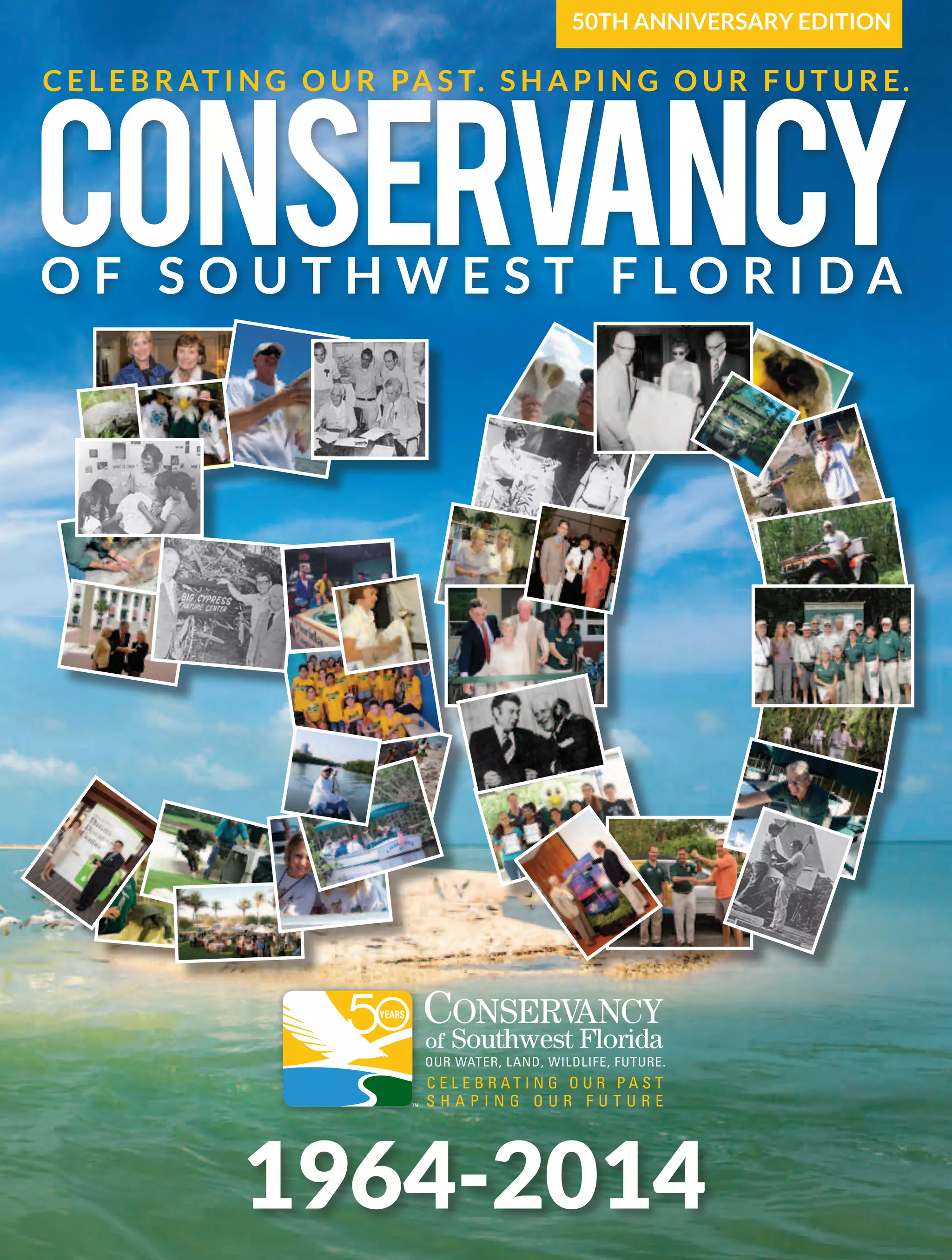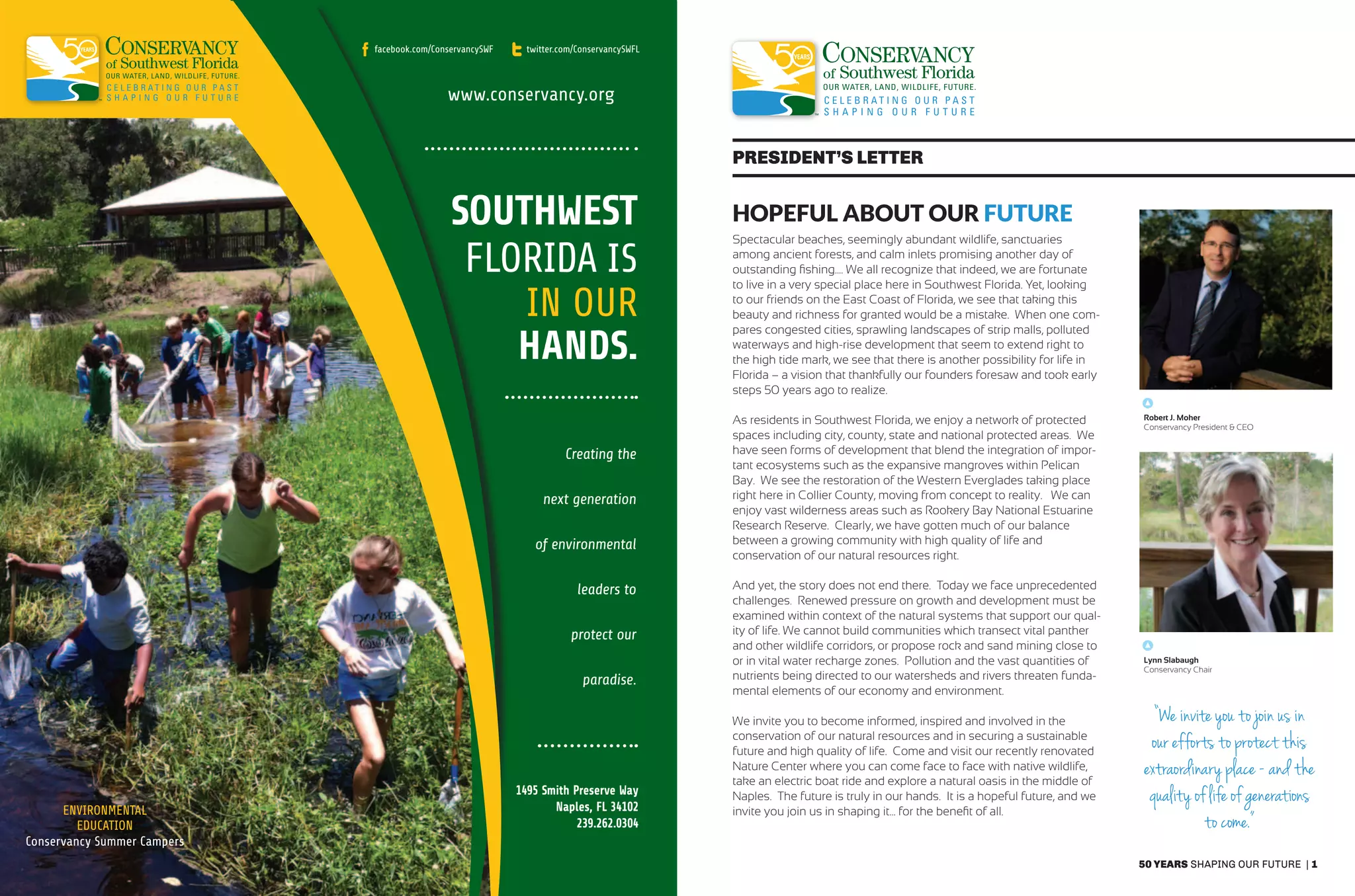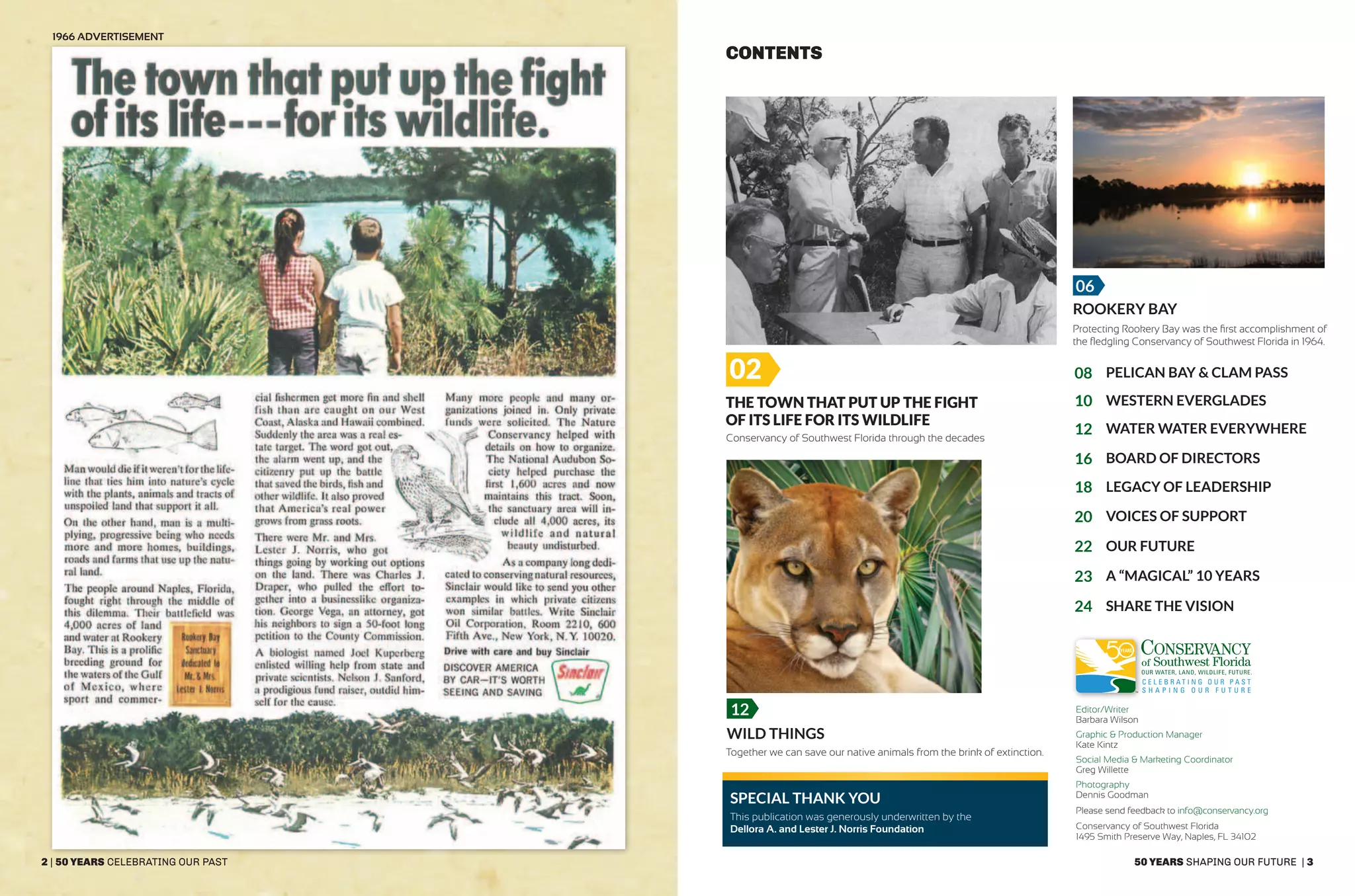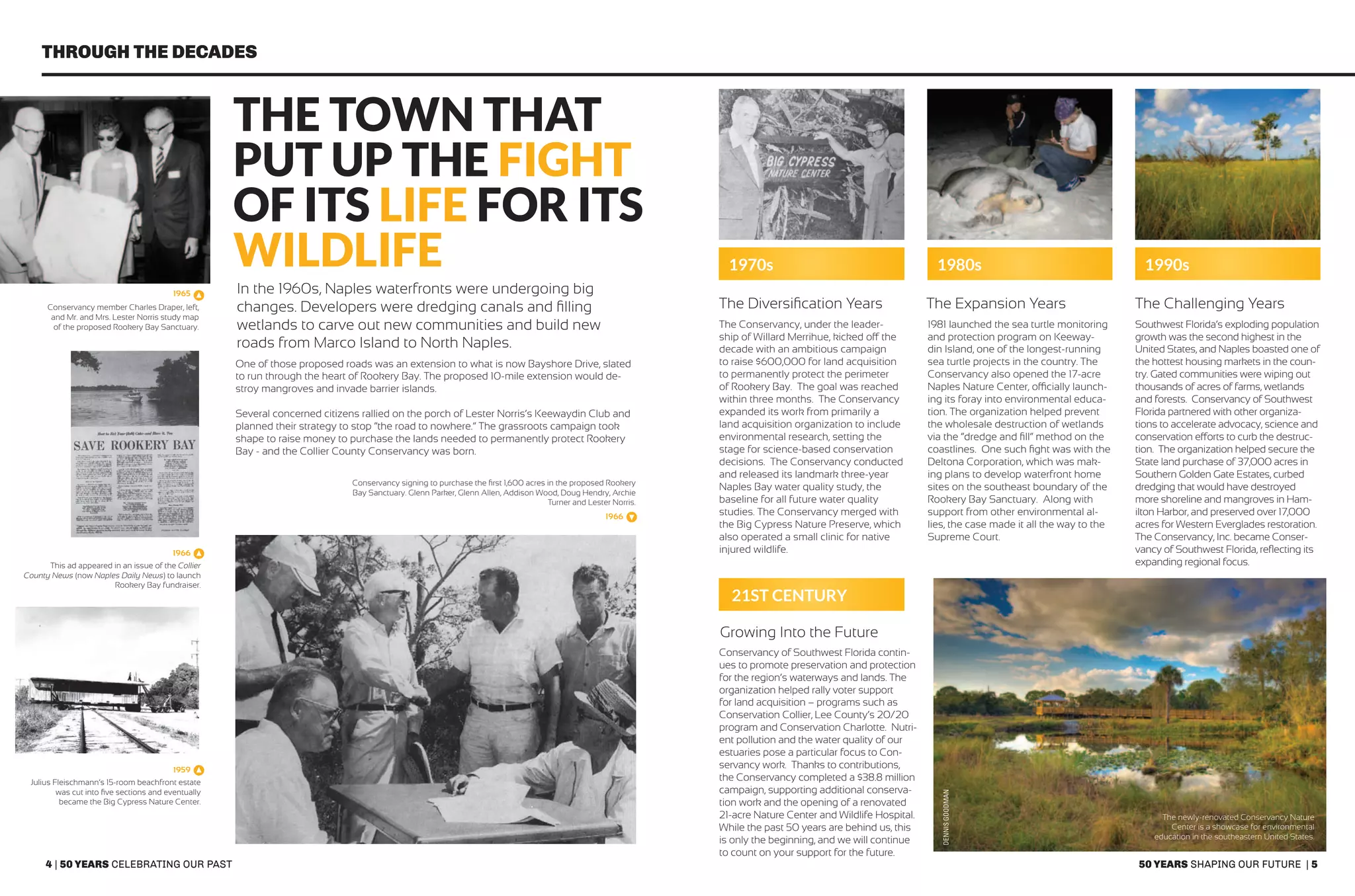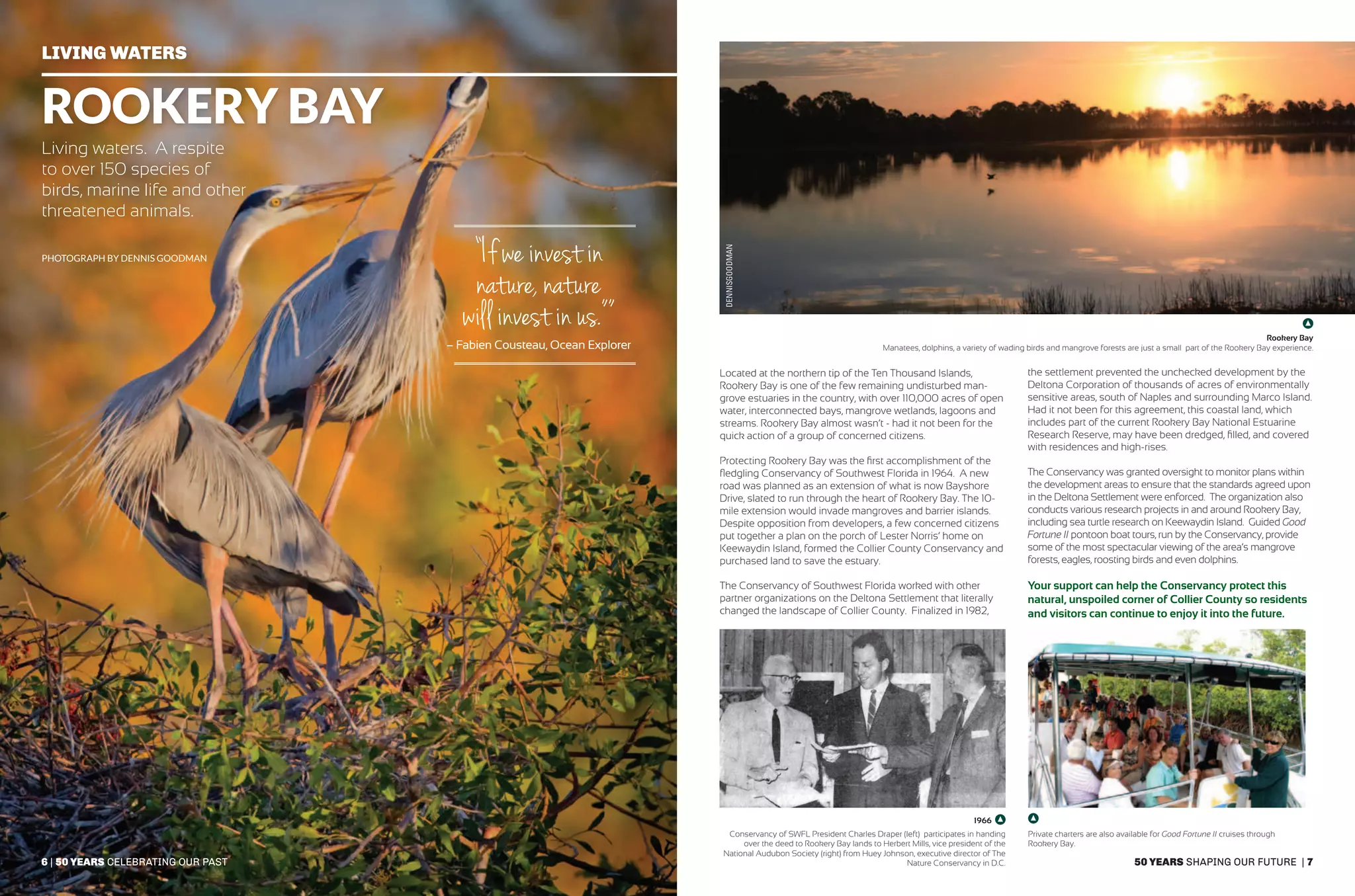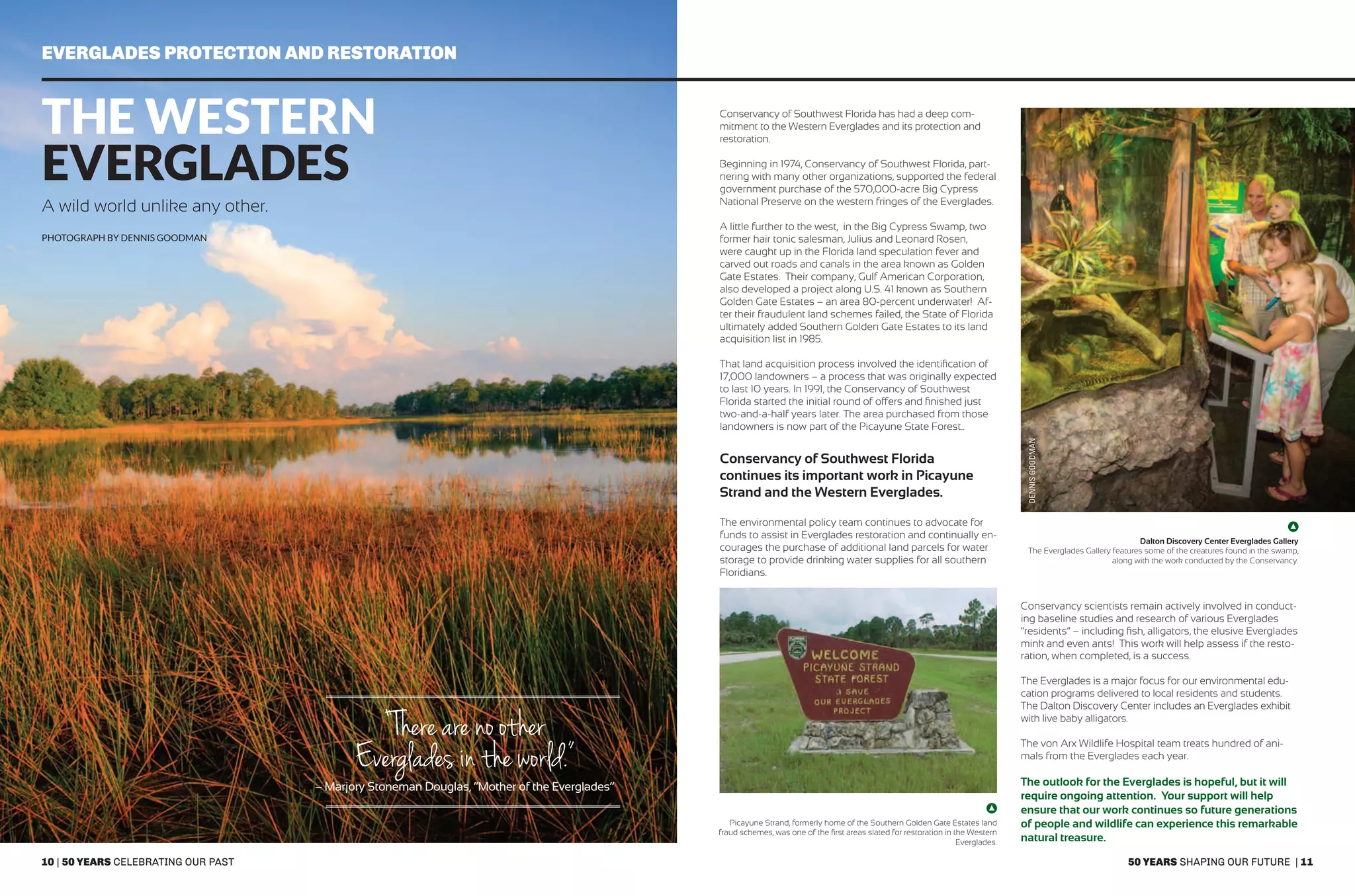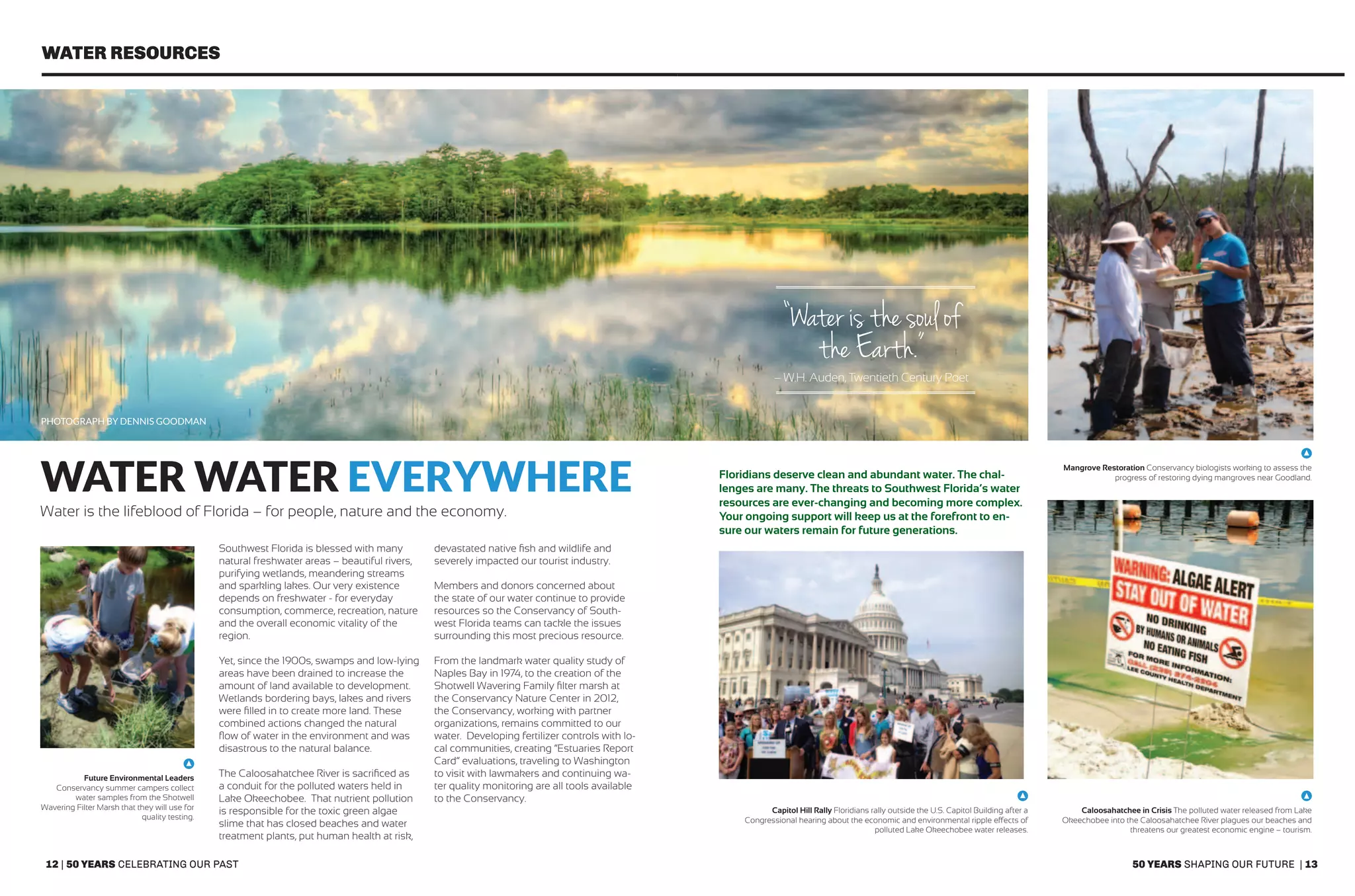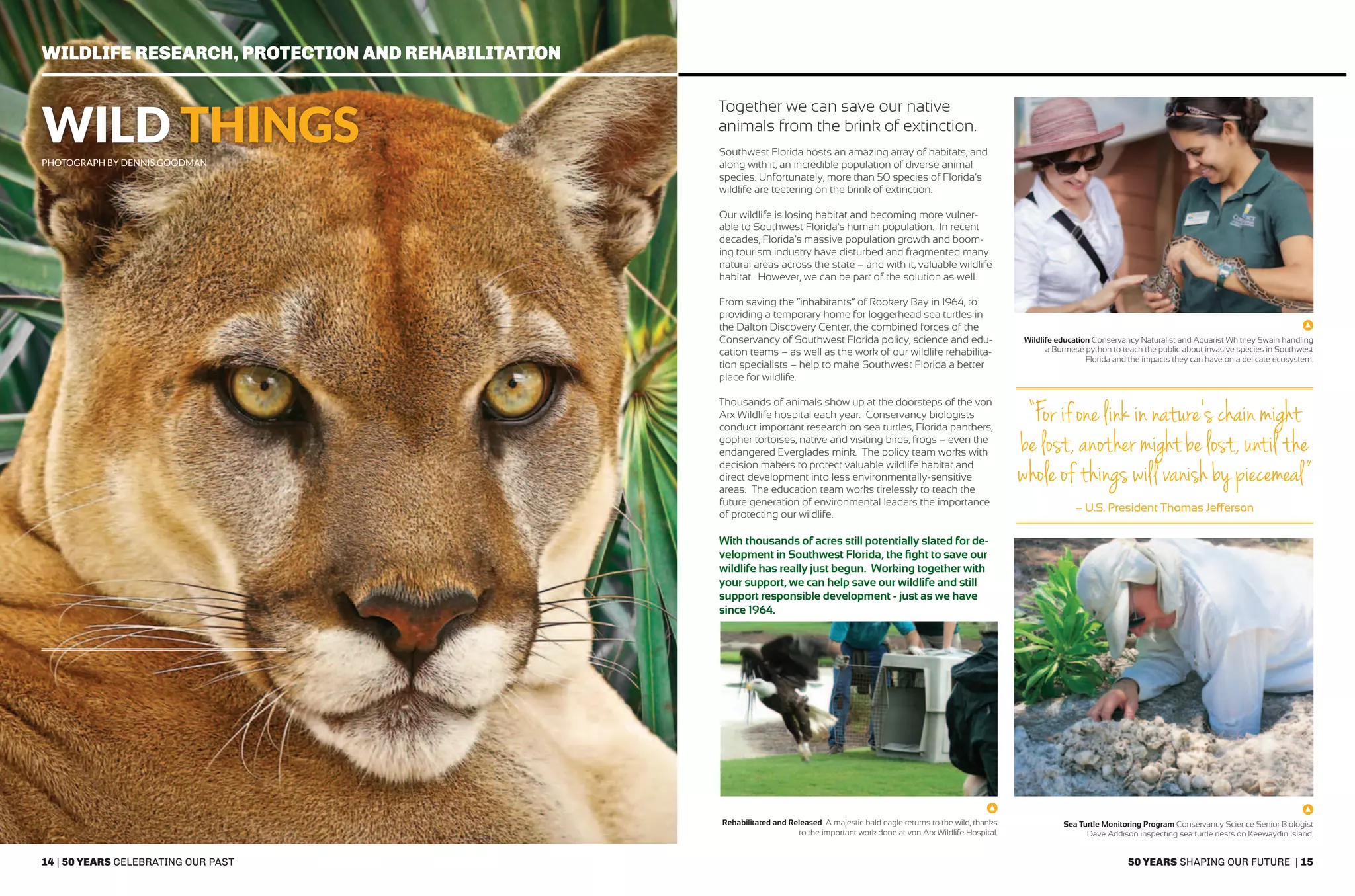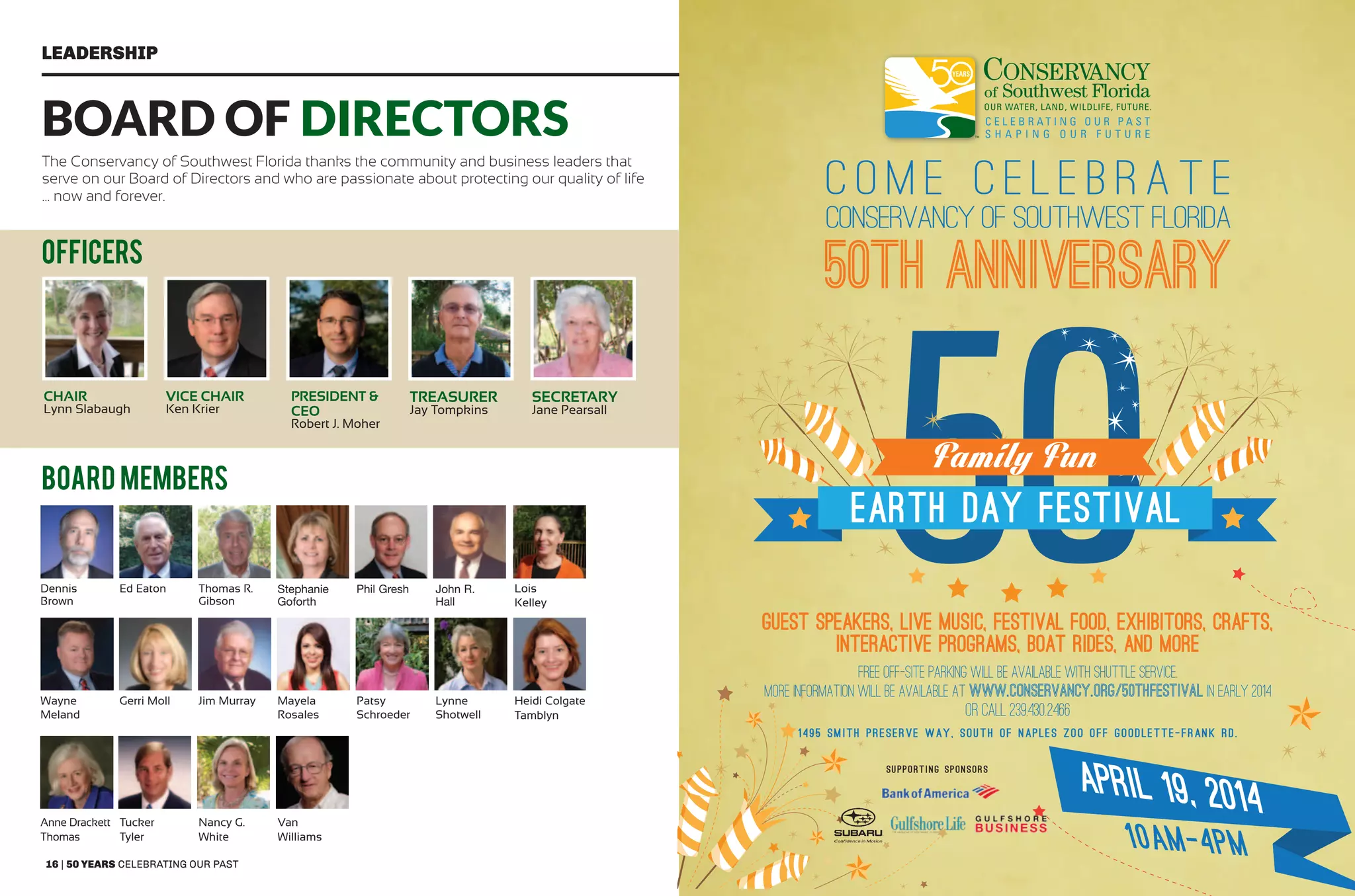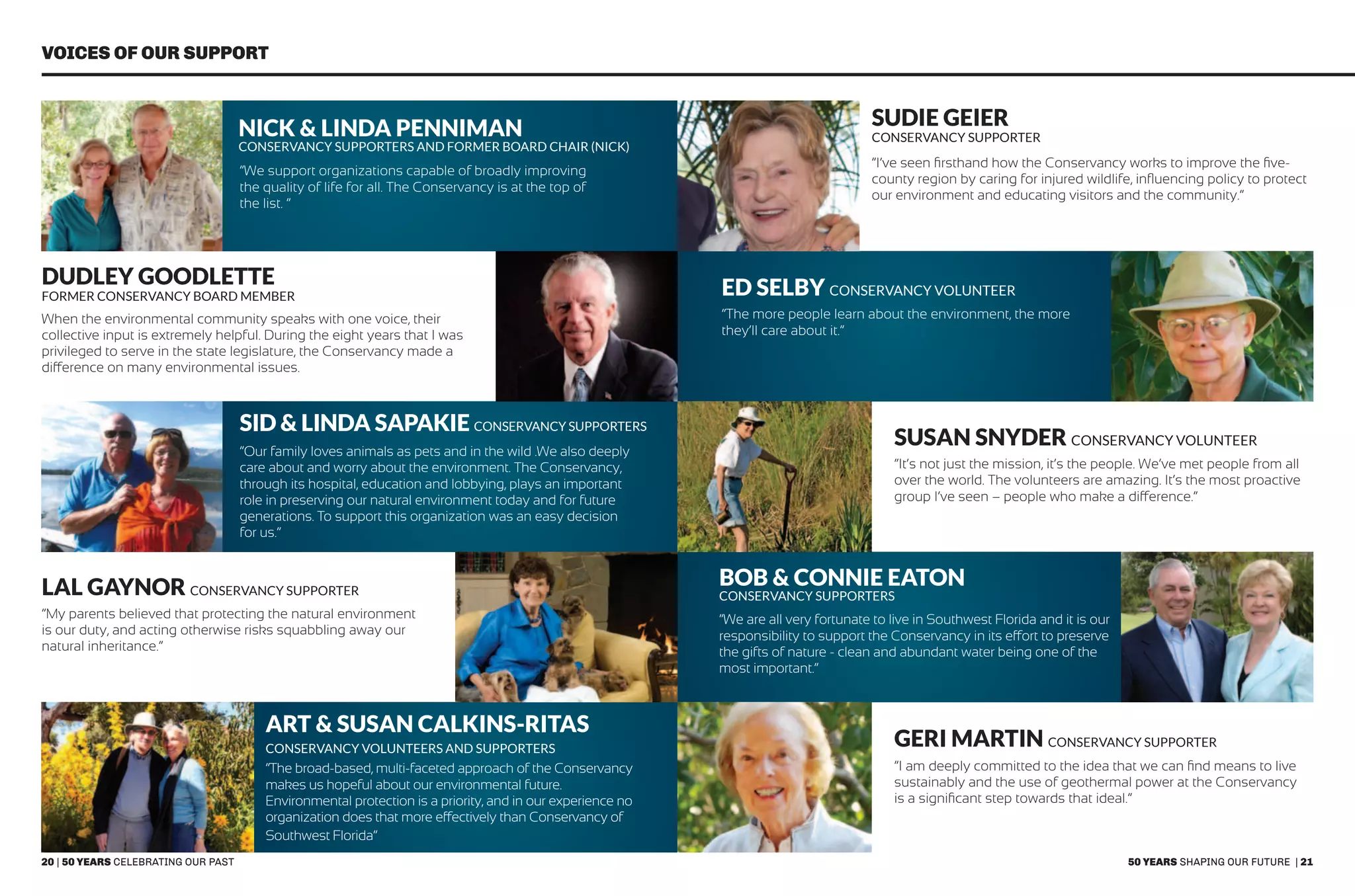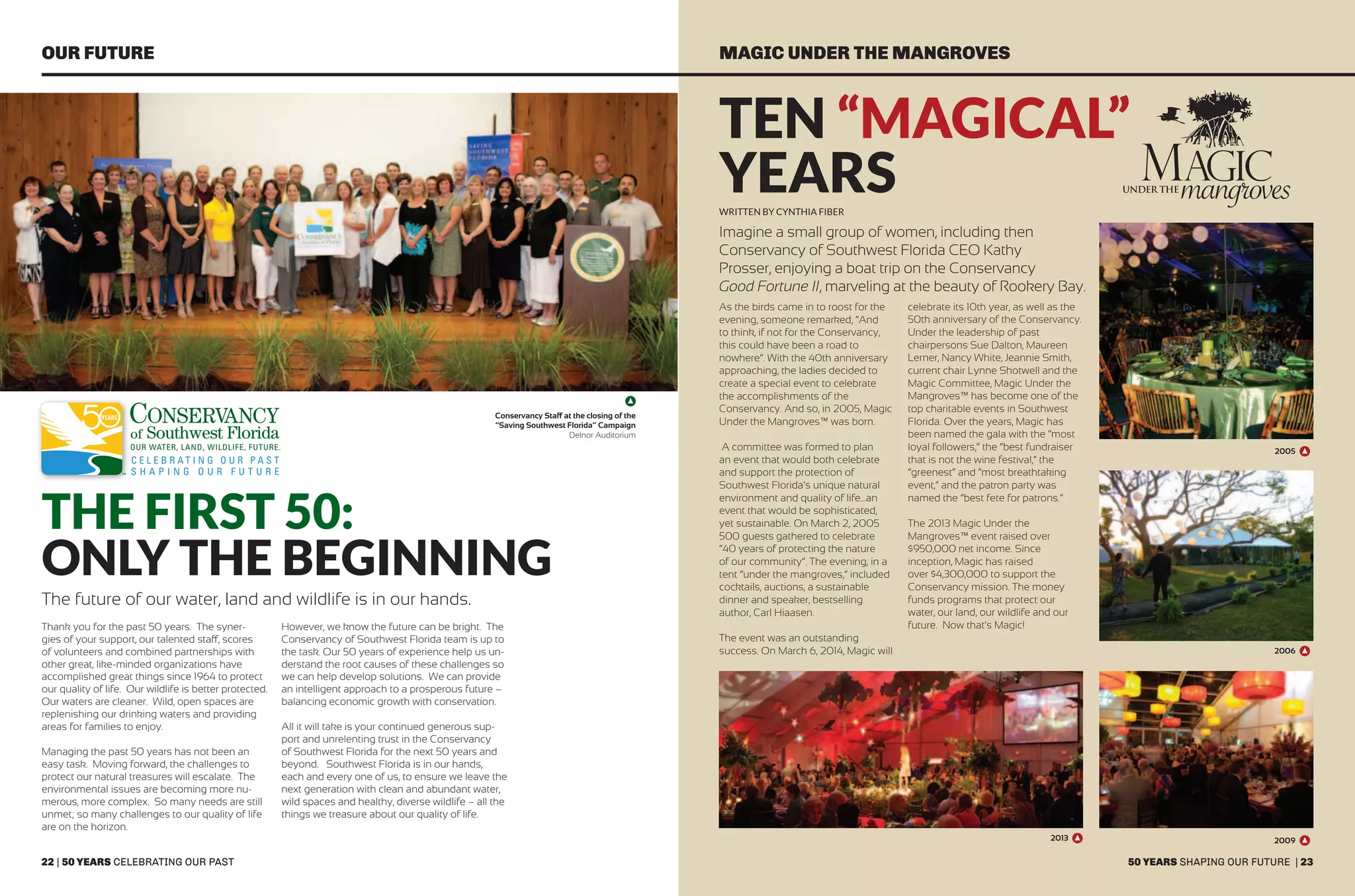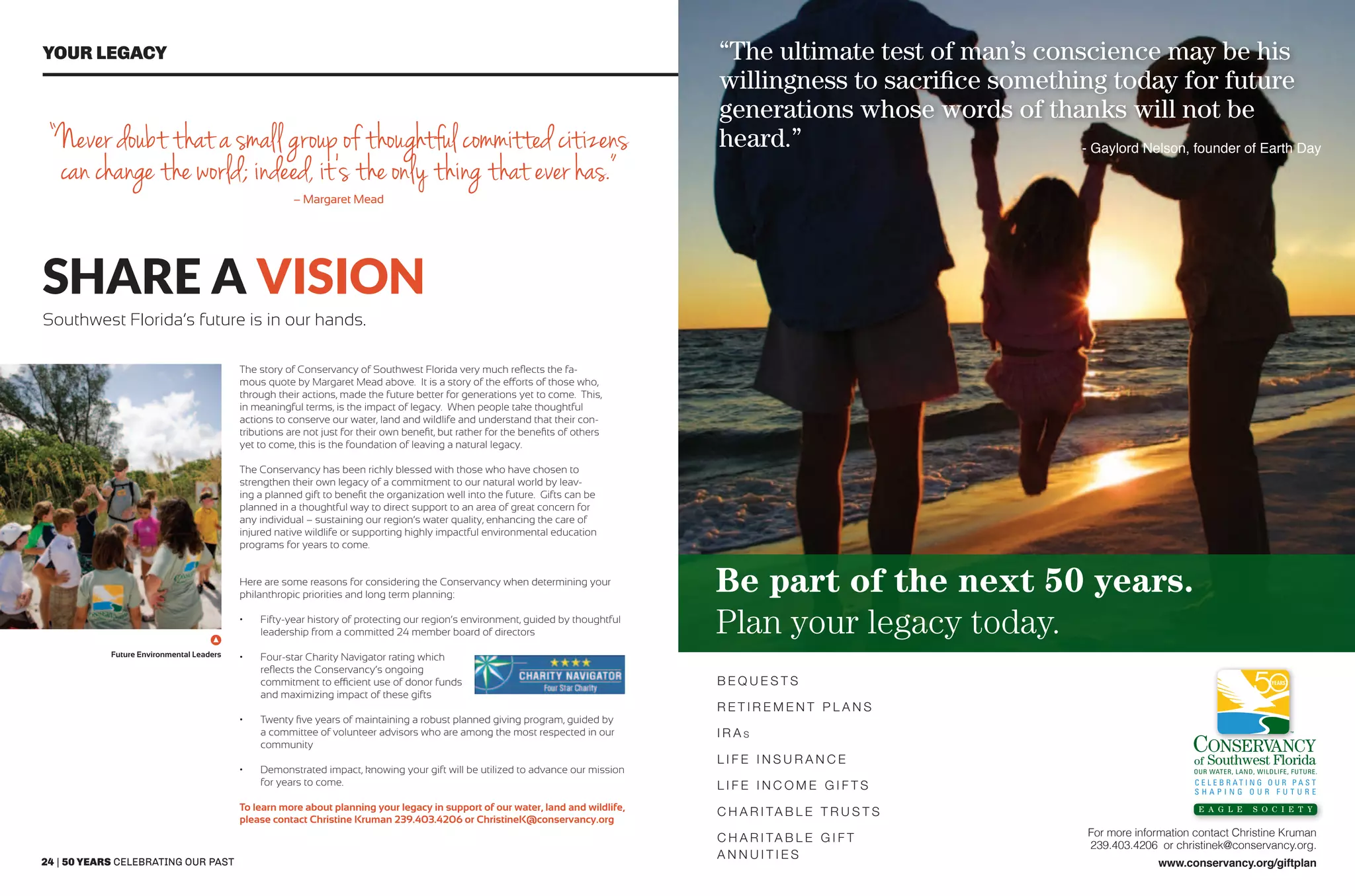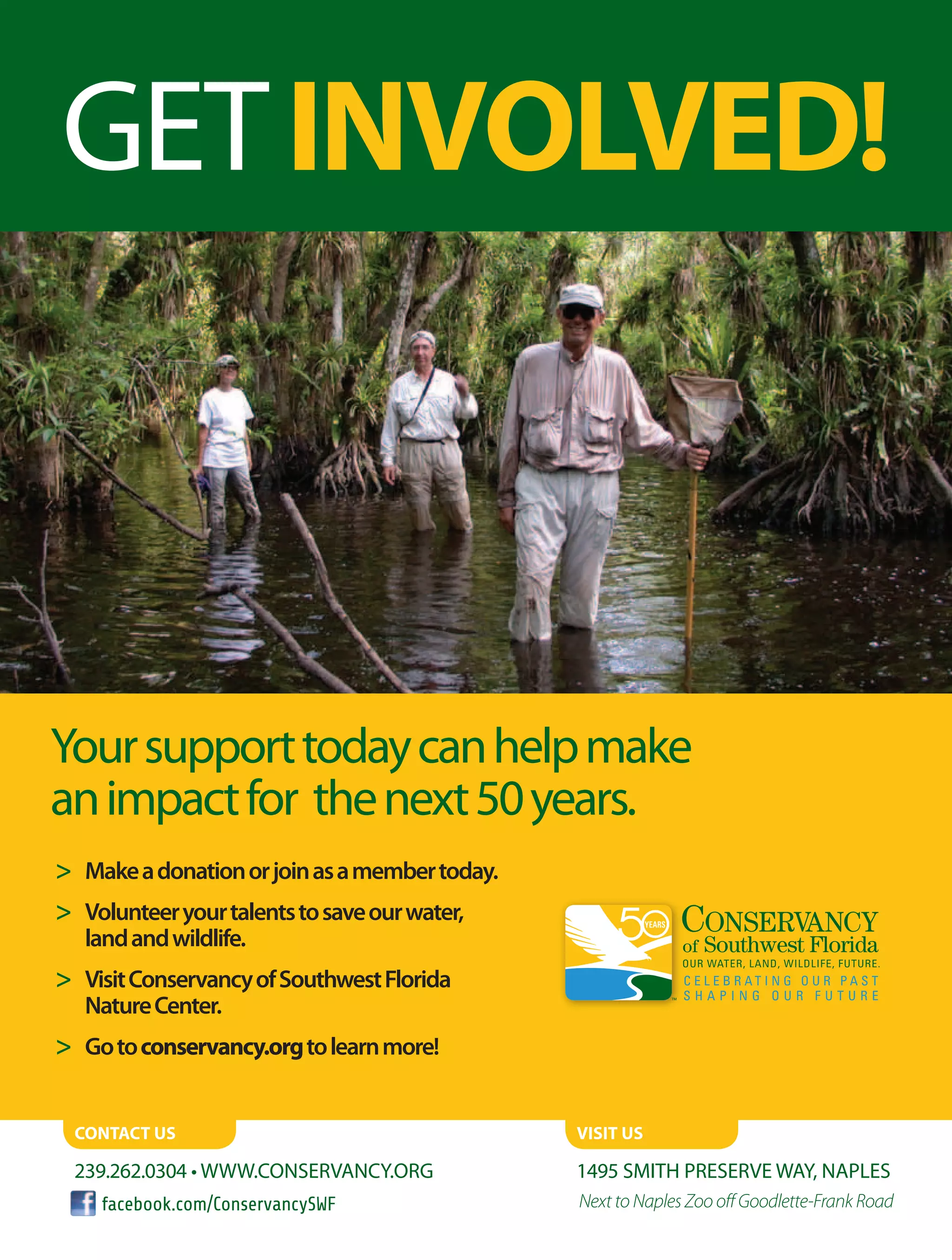The document discusses the history of conservation efforts in Southwest Florida over the past 50 years led by the Conservancy of Southwest Florida. It summarizes that the Conservancy was founded in the 1960s to protect Rookery Bay from development, and has since expanded its work to include land acquisition, environmental research, education, and advocacy to promote balanced growth and water quality protection. The Conservancy has helped preserve over 100,000 acres and faces ongoing challenges around population growth and water pollution, but remains committed to conservation for future generations.
